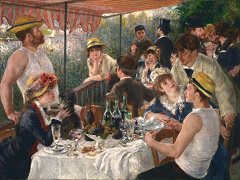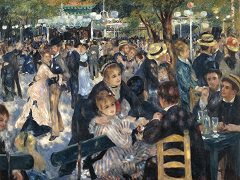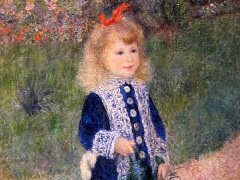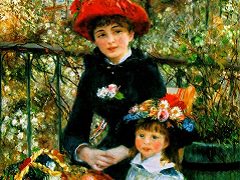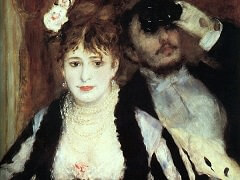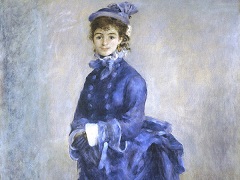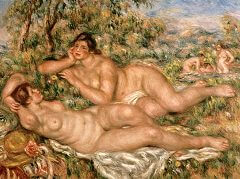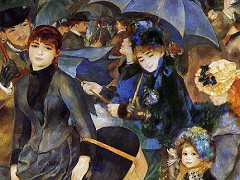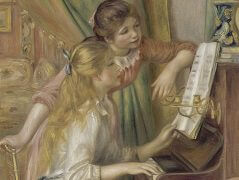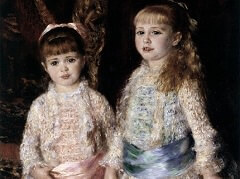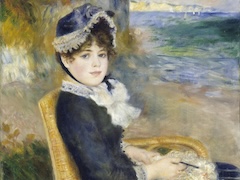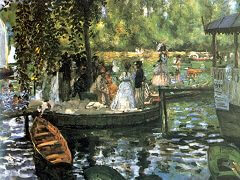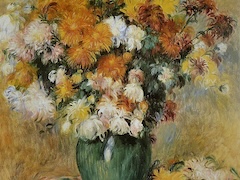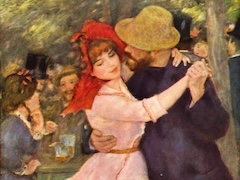Mother and Children - by Pierre-Auguste Renoir
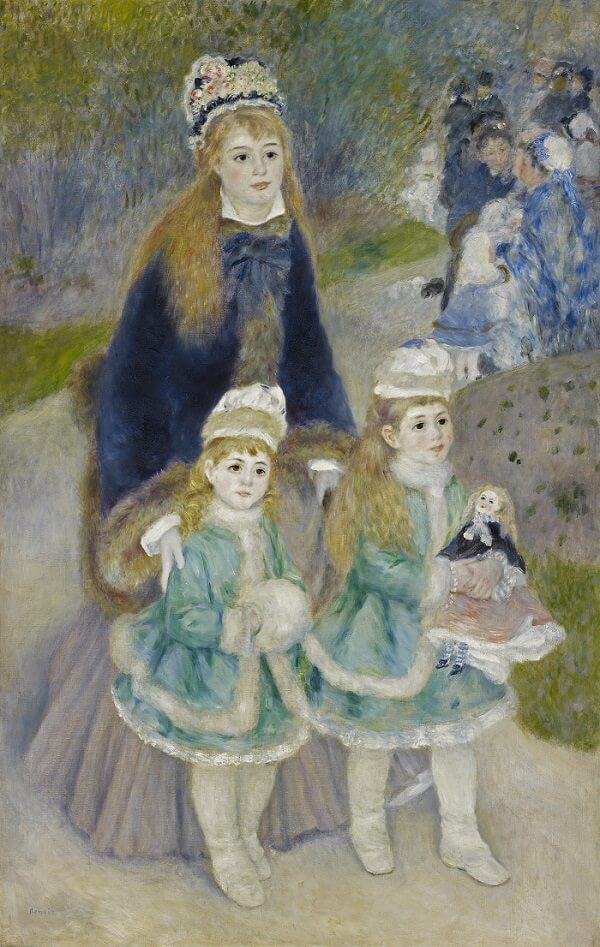
Mother and Children, is a perfect expression of the springtime of Renoir's talent. While its forms and color promise the rich effulgence of his later years, they remain discreet and almost shyly reticent. The scene is set in a park, where a mother guides her two daughters along a circling path. Together they form a triangular group set apart from the more distant figures. A hint of symmetry in the arrangement of the three main figures lends a note of decorative elegance. Yet the whole composition is developed as a series of off-balances. The mother and daughters are turned slightly to the right as they move along the walk. The interplay of the formal and informal thus introduced is continued in the relationship of the two small girls. They are dressed alike and similarly posed. But the younger sister at the left is more enclosed, with her hands hidden in a white fur muff. The elder is more self-confident, as, with a cocky turn of the head, she strides forward, holding her doll in firmly clasped hands. The lovely young mother urges them quietly along their way, her reassuring hand touched to the shoulder of her smaller child.
To affirm the oblique movement of his portrait group, Renoir emphasizes the diagonal direction of the path. Partly to contrast with this lateral movement, and partly to balance the weighted left side of his composition, he has massed the other figures in the extreme upper right of the scene. The overlap of the older girl's hat and the dress of the woman seated in the middle distance serves as a transition to join the two groups. Elsewhere a screen of foliage serves to set off the figures by limiting the movement into the picture space.
The feeling of budding freshness conveyed by the figure is carried throughout the canvas by the tender color harmonies. The greens and pale lavenders of the landscape are echoes of the more intense turquoise and creamy white of the girls' costumes and the rich tones of their mother's dress and fur-trimmed jacket. The sharper contrasts of the doll's frock repeat in miniature the shape and color "theme" of the mother. But at every turn, the painter has avoided the obvious with mystifying ease. There is no archness in its sentiment, no banality in its sweet and fragrant spirit.

